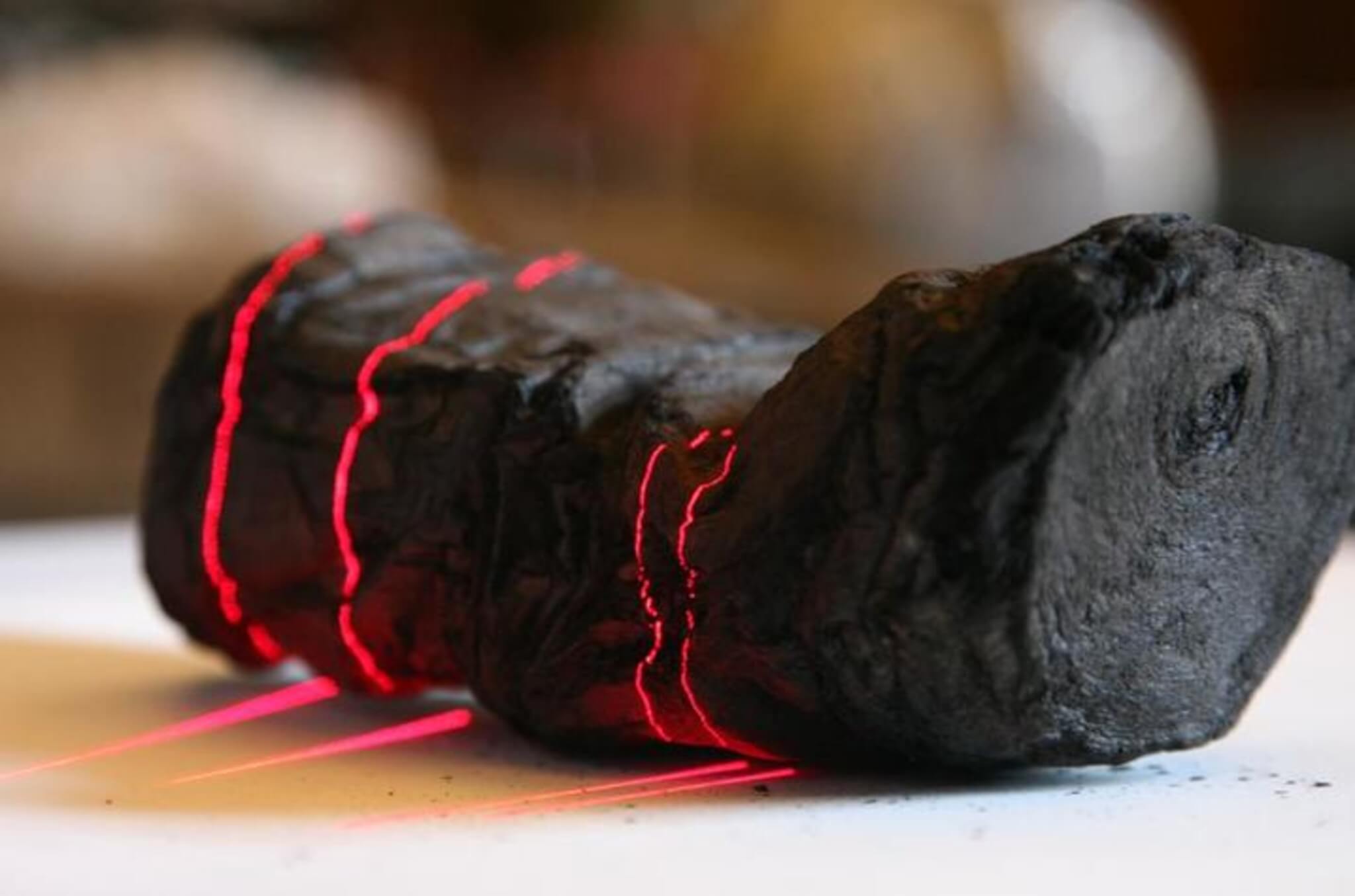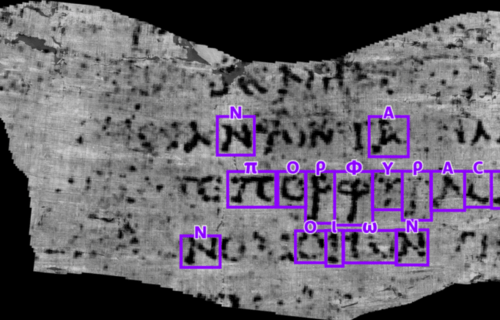LEXINGTON, Ky. — For over two millennia, the Herculaneum scrolls have remained one of the most enigmatic and unattainable treasures among the world’s collection of ancient manuscripts. These scrolls, severely damaged and rendered “unreadable” by the devastating eruption of Mount Vesuvius in 79 CE, have guarded their wisdom since ancient times. Thanks to artificial intelligence, however, a part of the 2,000-year-old scroll has been deciphered after its burial in ash.
University of Kentucky researchers, in partnership with EduceLab: A Digital Restoration Initiative, the Library of the Institut de France, and founders of the Vesuvius Challenge, have announced that an entire word has been translated from a section of the still-sealed Herculaneum scrolls.
“These texts were written by human hands at a time when world religions were emergent, the Roman Empire still ruled and many parts of the world were unexplored,” says Brent Seales, a computer science professor at UK, in a university release. “Much of the writing from this period is lost. But today, the Herculaneum scrolls are unlost.”
The Greek characters πορφύραc, revealed to mean “purple dye” or “clothes of purple,” are among the numerous characters and lines of text extracted by Vesuvius Challenge participants Luke Farritor and Youssef Nader.
“This is just incredibly exciting,” says Farritor, a 21-year-old SpaceX intern. “The EduceLab team did a really great job of building a solid foundation for progress, especially for virtually unwrapping the scrolls. I was able to use their prior work, as well as the observations of other contestants, to build a machine learning detector to find these letters.”
Shortly after Farritor’s revelation, Nader, an Egyptian biorobotics graduate student in Berlin, independently discovered the same word in the same area with even clearer results.

“It took me a few days to process this, because I couldn’t believe my eyes,” notes Nader. “It was exhilarating — reading text we did not understand, but we knew was left to us by people thousands of years ago. It was like peeking through a time machine into the past.”
The image displaying the text, obtained from a wrap of papyrus deep within the still-unopened, carbonized scroll, has been authenticated by expert papyrologists. These experts represent countries currently in possession of scrolls from Herculaneum, including England, France, and Italy. Their reaction upon seeing the images was filled with excitement.
“It’s extremely exciting to be reading entire words, not just sequences of letters, from within a scroll,” says Federica Nicolardi, assistant professor in papyrology at the Università degli Studi di Napoli Federico II. “This scroll has remained untouched for centuries — protecting its content in a state that we can imagine as completely free from gaps. The most unique feature of the Library of Herculaneum is that the preserved texts are entirely unknown from other sources. However, I’m confident we will soon be able to read more, understand the topic of the work, identify the scribe if already present in the collection and date the script.”

The word “purple” holds historical significance, as purple dye was highly sought after in ancient Rome, and it was made from the glands of sea snails.
“But more important than the individual word is reading anything at all,” says Nicolardi. “The advance gives us the possibility to recover the text of the entire scroll.”
The journey to this remarkable discovery began two decades ago when Seales embarked on an audacious mission to create an AI program capable of reading the Herculaneum scrolls without physically opening them. In March, Seales, along with Silicon Valley investors Nat Friedman, Daniel Gross, and JP Posma, initiated a global competition to decipher the charred scrolls after demonstrating that AI could successfully extract letters and symbols from X-ray images of the unrolled papyri.
The Vesuvius Challenge, as it was named, released software and thousands of 3D X-ray images of two rolled-up scrolls and three papyrus fragments. The two unopened scrolls, believed to have belonged to a Roman statesman, are part of the Institut de France’s collection in Paris.
Contestants in the Vesuvius Challenge are competing for a grand prize of $700,000, awarded to the first to read four passages of text from the scrolls’ inner layers by the end of 2023. Progress prizes include $50,000 for accurately detecting ink on the papyri from the 3D X-ray scans.
“What the challenge allowed us to do was to enlist more than a thousand research teams to work on a problem that would normally have about five people working on it,” explains Seales. “The competitive science aspect of this project is just fascinating.”
Six months into the competition, Farritor and Nader, inspired by Seales’ software, have virtually unraveled numerous layers of papyrus. Farritor and Nader, achieving first and second place, respectively, developed machine learning techniques to unveil the ink within X-ray CT scans of the scroll. Their findings earned them the “First Letters Prize,” which includes a $40,000 reward for Farritor and $10,000 for Nader.

As Seales and his team continue their efforts, they aim to read every unopened papyrus scroll in the collection, which comprises over 600 sealed and unreadable scrolls. All winning submissions have been made open source, enabling future contestants to build upon this groundbreaking work.
Seales believes that reading the entire collection of Herculaneum scrolls is not only possible but could represent the most significant discovery from the ancient world to date.
“We have pursued the dream of reading this extremely challenging material from Herculaneum. We have now proven that it is possible. There is a huge emotional component, which is powerful and inspiring,” says Seales. “Overcoming damage incurred during a 2,000-year span is no small challenge. But that’s what researchers do — together, we conquer the seemingly impossible.”
You might also be interested in:
- Best Places To Visit In Italy: Top 5 Must-See Cities, According To Travel Experts
- Amazing archaeological finds dating back to 10,000 BC unearthed just 8 miles from Stonehenge
- Artificial intelligence sheds fresh light on origins of the Dead Sea Scrolls


. However, I’m confident we will soon be able to read more, understand the topic of the work, identify the scribe if already present in the collection and date the script.”
Maybe…maybe not?